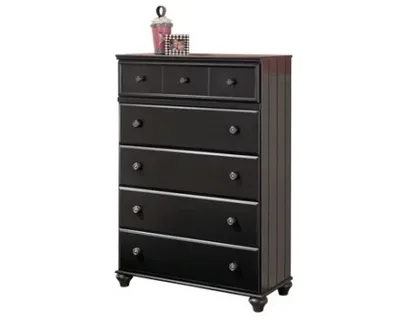The chest of drawers is a staple in modern interior design, offering both functionality and aesthetic appeal. But this humble piece of furniture has a rich and fascinating past. From its origins as a simple storage chest to the sleek, multi-functional pieces we use today, the history and evolution of the chest of drawers reflects broader trends in craftsmanship, culture, and design.
Origins: From Chests to Drawers
The earliest version of the chest of drawers dates back to medieval Europe. Initially, people used simple wooden chests with hinged lids to store linens, clothes, and valuables. These chests often doubled as seating or tables in small living spaces. Over time, furniture makers began adding one or two drawers beneath the chest, laying the foundation for what would become the modern chest of drawers.
17th and 18th Century: Rise of Craftsmanship
By the 17th century, the chest of drawers evolved into a distinct furniture form, especially popular in England and France. These pieces were crafted from fine woods like oak, walnut, and mahogany, often adorned with brass handles and decorative veneers. The Baroque and Rococo periods introduced elegant curves and intricate carvings, making the chest of drawers not just a storage solution but a status symbol.
During the 18th century, furniture became more standardized in shape and size, reflecting the changing needs of urban households. The number of drawers increased, usually ranging from three to six, offering more organization options. This period marked a significant turning point in the history and evolution of the chest of drawers.
19th and 20th Century: Industrialization and Mass Production
The Industrial Revolution in the 19th century transformed furniture manufacturing. With machines replacing hand tools, chest of drawers became more affordable and widely available. Designs became simpler and more functional, appealing to the growing middle class. During this time, styles like Victorian, Arts and Crafts, and Art Deco each left their mark on chest of drawers design.
In the 20th century, mid-century modernism brought sleek lines, minimalism, and new materials like plywood and metal into furniture design. This period saw the chest of drawers evolve further to match modern lifestyles, often incorporating modular elements or serving dual purposes in small apartments.
Contemporary Designs: Form Meets Function
Today, the chest of drawers comes in countless variations, from classic wooden styles to ultra-modern designs with smart storage solutions. Whether used in bedrooms, hallways, or even bathrooms, these pieces have remained relevant across centuries. The emphasis is now on both aesthetics and usability, with a focus on sustainability, customization, and innovation.
As we look at the history and evolution of the chest of drawers, it’s clear that this versatile piece of furniture has not only stood the test of time but has also adapted to meet changing human needs and tastes.
Conclusion
The chest of drawers has journeyed through centuries of design evolution, transitioning from rudimentary storage chests to beautifully crafted furniture essentials. Understanding the history and evolution of the chest of drawers offers a glimpse into broader historical changes in society, technology, and design. It’s more than just a piece of furniture—it’s a symbol of how form and function can evolve hand in hand.


